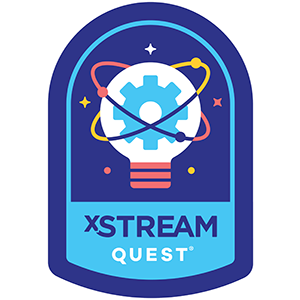As an adult with children of my own now, I finally have the reference to look back and identify all the signs of anxiety that manifested in multiple ways in multiple situations growing up. Many of these symptoms were so isolated or disconnected from the next anxiety symptom or situation that my wonderful and caring parents never put together the bigger picture of what I was dealing with. My mom would support me and help talk me through each individual challenge I faced growing up, but we didn’t realize how they indicated a bigger issue.
In elementary, I remember watching a TV show one night with my parents and being so disturbed that I had to walk on pillows up to my room, so that I did not touch the ground because of whatever fear developed from that evening show. Years later in middle school, I remember going to a cardiologist to get my chest pains checked out that only happened when I was practicing with my middle school basketball team. In high school, I remember making up excuses and blaming my mom to get out of certain social events. Looking back now, it is crystal clear the anxiety that plagued me, but while growing up, I do not believe my parents understood what was truly happening.
No matter the age, everyone in life goes through seasons of fear and anxiety. It is when anxieties and fears happen outside of normal age-appropriate cycles, that something could be happening at a deeper level. Anxiety is like someone turned up the volume of a regular fear and now this monster is unrelenting and unreasonable.
Children go through stages of fear. Many toddlers struggle with separation anxiety, darkness, and loud noises. Pre-K children can easily go through periods of struggling with monsters, thunderstorms, and getting lost. Older children may struggle with expectations, school, and social situations. There is a normal cycle for feeling and working through these fears, but children who struggle with anxiety may struggle with triggers that most children their age have already gotten over.
Now as a mom in my mid 30’s, my 8-year-old son has extreme anxiety with storms. While this is a typical fear for younger kids, most elementary kids do not have a panic attack and become unreasonable because of thunder. From looking back at what I experienced as a child myself, I can now identify some “cries for help” from my own child, as he cannot communicate or even process what he feels during a storm. When a storm is happening, there is no rationalizing with him. There is no “saying you will be ok.” He is having an extreme emotional reaction to a certain stimulus where his mind and body are telling him there is a danger around him. It is my job as his mom to help give him the safety and comfort he needs in that moment, and we can talk about it later.
Anxiety, no matter the age, is something that is difficult to experience. It can easily disrupt your daily life routine, but supporting a child dealing with anxiety is a different approach then a child with regular fears. To help their child, parents must determine if the child’s actions could be caused by anxiety and learn tools to help them cope. Here are some ideas and suggestions:
What can cause anxiety in children?
- Genetics and a family history of anxiety
- Exposure to stress
- Not having the basic needs of food, shelter, or clothing
- Issues in the home
- Neighborhood violence
What are some common symptoms of anxiety in children?
- Bed-wetting for a child who is potty trained
- Headaches or stomachache with no identifiable cause
- Rapid breathing or shortness of breath
- Difficulty falling or staying asleep
- Avoiding certain situations
- Constant tense muscles
- Tantrums or meltdowns for no reason
- Angry for no reason
- Worries about things far in the future
- Chest pains
How can a parent help an anxious child?
- If a child is in the middle of an anxious moment, a parent’s priority is to help them relax by whatever means necessary to assure the child they are safe
- Do not try to rationalize or explain to them when they are anxious
- Acknowledge your child’s fear and if possible, what is causing it
- Discuss the trigger outside of anxious moments and a possible plan of how to act to try and cope
- Model handling stress and anxiety in healthy ways at home
When to seek help?
- A child’s anxieties are disrupting day-to-day life activities.
- A child has anxious moments multiple times a day or week
- A child is trying to avoid behaviors or situations in their regular life due to anxiety




